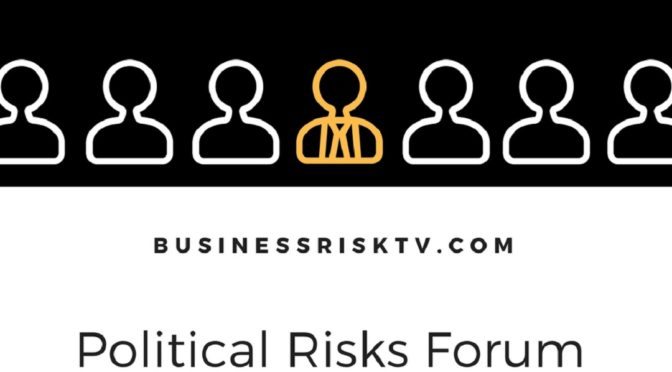Protecting one’s own market seems to lead to calling out others for your own crimes!
China’s Overcapacity and Deflation:
- Issue: China possesses significant excess production capacity in certain industries like steel, aluminum, and solar panels. This overcapacity can lead to downward pressure on prices, potentially causing “deflationary exports” if Chinese companies sell goods below cost in international markets.
- Arguments:
- Proponents:
- Overcapacity puts excessive pressure on global prices, hurting competitors and hindering fair trade.
- Deflationary exports harm other economies, especially developing nations, undermining domestic industries.
- China’s government subsidies exacerbate the problem, giving Chinese companies an unfair advantage.
- Opponents:
- Excess capacity isn’t unique to China; other countries face similar challenges in different sectors.
- Global market forces, not just China, drive price fluctuations.
- Accusations of “dumping” often lack concrete evidence, and Chinese prices might reflect lower production costs.
Impact on Western Markets:
- Concerns: Deflationary Chinese exports could dampen inflation in Western economies, potentially hindering recovery from economic downturns.
- Policies:
- Inflation Reduction Act (US): Aims to boost domestic green energy production, potentially incentivising US companies over foreign competitors.
- Green Deals (Europe): Similar focus on domestic green industries, raising concerns about protectionism.
- Arguments:
- Proponents: These policies incentivise domestic innovation and job creation, contributing to long-term economic stability.
- Opponents: Such policies could restrict fair trade and hinder global efforts towards sustainability.
Comparison with Southeast Asia:
- Southeast Asian nations: Facing challenges in exporting to Western markets due to factors like infrastructure limitations, trade barriers, and differing regulatory environments.
- Arguments:
- Proponents: Western policies favouring domestic green industries create an uneven playing field, disadvantageing Southeast Asian producers.
- Opponents: Southeast Asian nations also need to focus on internal reforms to improve competitiveness and meet Western standards.
Key Considerations:
- The issue is complex, with valid arguments on both sides.
- Addressing overcapacity requires multifaceted solutions, including market-based reforms, industrial restructuring, and international cooperation.
- Trade policies should balance legitimate concerns about unfair competition with the need for open and fair global markets.
- Collaboration between all stakeholders, including governments, businesses, and civil society, is crucial for developing sustainable and equitable trade practices.
Additional Points:
- The situation is dynamic, with ongoing efforts to address overcapacity and deflationary concerns in China.
- The impact of Western policies like the Inflation Reduction Act and Green Deals is yet to be fully realised.
- Continuous dialogue and policy adjustments are necessary to ensure a balanced and mutually beneficial global trade environment.
Get help to protect and grow your business
Find out more
Subscribe for free business risk alerts and risk reviews
Connect with us
Read more business risk management articles
Connect with us
The Deflationary Dance: China’s Overcapacity, Western Subsidies, and the Global Market Tug-of-War
China’s economic rise has been accompanied by a shadow: concerns about its industrial overcapacity and its potential to exacerbate global deflation through “dumping” cheap goods in international markets. This narrative often paints China as the sole culprit, ignoring similar practices and policies employed by Western nations, particularly the United States and Europe, that can also distort the global market and limit opportunities for developing economies. This article delves into the complex interplay of these factors, examining the arguments for and against China’s alleged deflationary threat and exploring the parallel policies in the West that create similar challenges for developing countries.
The Overcapacity Argument:
China’s rapid economic growth in recent decades has led to significant investment in various industries, particularly heavy industries like steel, shipbuilding, and aluminum. This investment boom resulted in substantial overcapacity, where production exceeds demand. Critics argue that excess production leads to price drops, as Chinese companies compete on price rather than quality, flooding global markets with unfairly cheap goods. This, they claim, can harm domestic industries in other countries, hindering their growth and competitiveness.
The “Dumping” Debate:
The accusation of “dumping” refers to selling goods below their cost of production in foreign markets. While China has faced anti-dumping investigations in the past, the evidence for systematic dumping is contested. Some argue that Chinese companies are simply more efficient and have lower production costs due to factors like economies of scale and government subsidies. Others point out that anti-dumping measures often protect inefficient domestic industries in developed countries, rather than promoting fair competition.
Beyond the Chinese Factor:
The narrative of China as the sole culprit conveniently overlooks similar practices and policies in the West. The United States, for example, has implemented the Inflation Reduction Act, which provides significant subsidies for domestic clean energy production. This policy, while aimed at reducing carbon emissions, also disadvantages foreign competitors, particularly those in developing countries with comparable clean energy technologies.
Similarly, the European Union’s Green Deal, which incentivises the transition to a more sustainable economy, can create barriers for developing economies that lack the resources to comply with its strict environmental regulations. These protectionist measures limit market access for developing countries, hindering their potential to export and participate in the global green economy.
The Global Market Tug-of-War:
The accusations against China’s overcapacity and “dumping” often ignore the broader context of globalised trade and competition. The global market is a complex web of interconnected economies, where each player seeks to maximise its own advantage. While China’s overcapacity may pose challenges, it is not the only factor contributing to global deflationary pressures.
Furthermore, the focus on China deflects attention from the need for global cooperation and coordinated efforts to address broader issues like overproduction, stagnant wages, and income inequality. These are systemic problems that require solutions beyond simply blaming individual countries or industries.
Moving Beyond the Blame Game:
Instead of engaging in a blame game, the international community should focus on finding constructive solutions that address the underlying issues of overproduction, market distortions, and unequal access to resources. This requires:
- Transparency and accountability: All countries, including China, the United States, and the European Union, should be transparent about their trade practices and subsidies, and be held accountable for unfair trade practices.
- Multilateral cooperation: International organisations like the World Trade Organisation (WTO) need to be strengthened to facilitate fair and open trade, while also addressing concerns about dumping and trade distortions.
- Focus on sustainable development: Global efforts should focus on promoting sustainable development practices that create a level playing field for all countries, regardless of their stage of development. This includes investing in clean energy technologies, promoting innovation, and ensuring equitable access to resources.
Conclusion:
The issue of China’s overcapacity and its potential impact on global deflation is complex and multifaceted. While concerns about unfair trade practices are legitimate, it is crucial to avoid simplistic narratives that scapegoat individual countries. Instead, a more nuanced understanding is needed, acknowledging the role of similar policies in the West and focusing on finding cooperative solutions that benefit all players in the global market. Only through multilateral cooperation and a commitment to sustainable development can we ensure a level playing field for all and create a more prosperous and equitable future for the global economy.





